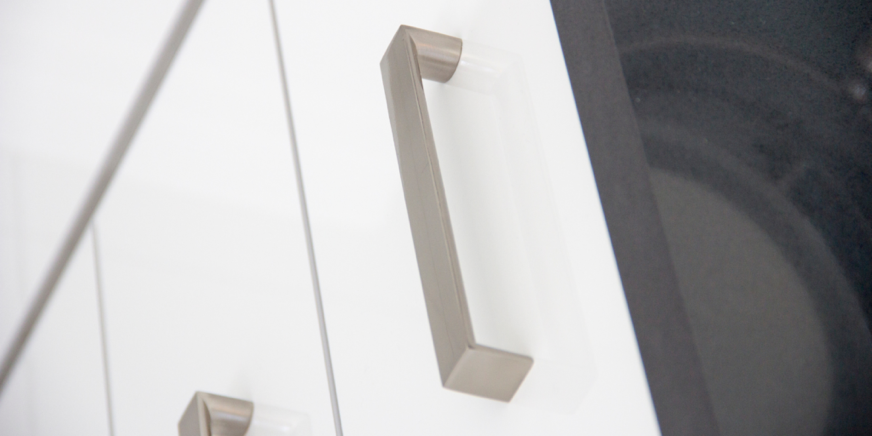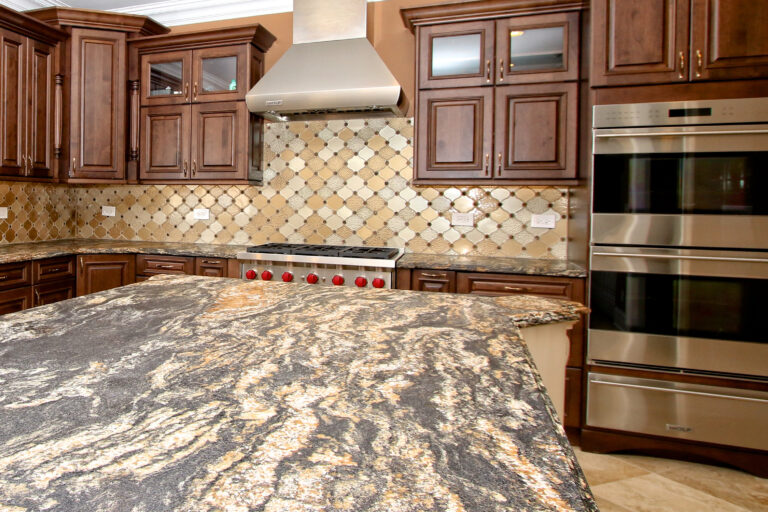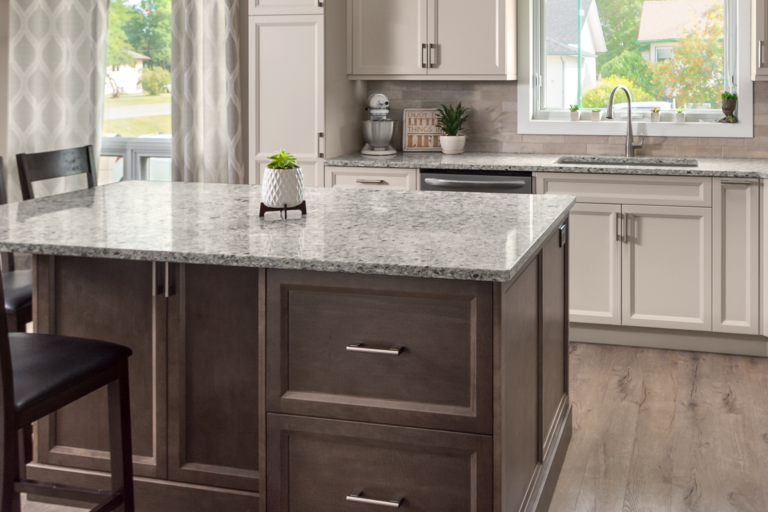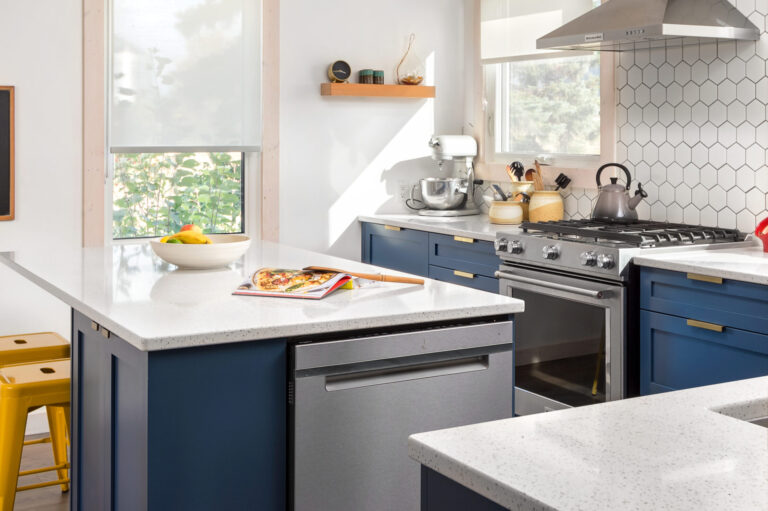Are you ever scrolling through Pinterest, dreaming of that perfect kitchen style, but are unsure of where to start? We have the ultimate guide to help you find your design style and even whipped up a fun quiz to uncover your perfect kitchen!
THE MODERN KITCHEN
The kitchen is often the busiest and most chaotic space in the entire home. A modern kitchen design can act as a calm backdrop to the busy commotion.
And when planning a remodel or a new build for the kitchen it’s important to get the style you want right the first time around, since the kitchen is there to stay for a while.
Modern kitchen design is often broadly categorized as any style that’s less traditional and more contemporary—but, has specific roots in terms of its time, style, and inspirations. And it typically consists of open spaces, minimalist features, and simple colour palettes, offering a clutter-free space to relax and entertain.
The term “modern” covers everything sleek and streamlined. If you find that appealing—keep reading!

The Difference Between Modern and Contemporary
“Modern” and “contemporary” are often used interchangeably, but there is a real distinction between the styles.
Modern design refers to an actual historical design movement (specifically the early to mid-20th century) and follows a strict interpretation of elements.
“Contemporary” design literally means “current trends in the now”.
So, while both designs feature sleek and minimalist layouts and share many characteristics including functionality, they differ in their fluidity.
All in all, the modern style follows stricter guidelines whereas contemporary design is more fluid and tolerates “rule-breaking.” That means contemporary designs are more dynamic and they can change year after year to follow the newest trend.

What is a Modern Kitchen?
The overly simplified definition of modern kitchen design is that it’s loosely categorized as a kitchen design between transitional and contemporary. Now, there’s a lot more to it than that…
Did you know that they first originated in World War I? It was initially distinguished by flat surfaces, geometric forms, and little to no ornamentation.
Now that we’ve got the meaning, the differences and some history of the design, let’s jump into what the design aspect of it really is…
The Design Aspect of the Modern Kitchen
Modern kitchen design has become a part of a larger trend highlighting clean lines, open spaces, and minimalistic design elements, featuring highly functional post-industrial materials.
Modern kitchen design is driven by simplicity. It helps the overall kitchen feel by maximizing functionality by utilizing space and organized cabinetry.
They focus more on structure and form instead of surface ornamentation. This helps emphasize their smooth surfaces like concrete and steel, strong horizontal lines, and plenty of open space.
Here are some common elements to look for:
- Clean-lined faucets
- Sleek hardware
- Horizontal lines
- Neutral, limited colour palette
- Sometimes floor to ceiling windows
- Natural materials mixed with manufactured ones

Now, modern kitchens tend to stay away from clutter, excess ornamentation, and heavy, traditional furnishings. And compared to contemporary kitchens, they stay away from experimental shapes and trends, they stick with the tried and true.
So, here are some things you definitely won’t find in their design:
- Cluttered surfaces
- Elaborate edge treatments on countertops
- Heavy, traditional furnishings
- Highly decorated millwork
- Trendy shapes, finishes and colour palettes
- Colourful tiles
Modern kitchens focus on the architecture and structure of key elements, which means the colour palette tends to contain crisp and clean white and black and subtle neutrals. When you see brighter colours pop up it’s often in the accessories or sometimes in the wall cabinets as an accent colour to enhance the luxury aspect of the kitchen.
Here are some colours that you’ll see in modern kitchens:
- Neutrals: Dove grey, stone, wheat, cream, beige, putty
- Architectural white, matte black
- Brighter colours: hot-rod red, navy blue, royal blue, chartreuse, teal
Now that we’ve gone through some basic design features, let’s go over some key elements that make up the very definition of modern kitchens.
Elements of a Modern Kitchen
One of the most well-known aspects you’ll notice is sleek cabinetry. This is characterized by the unadorned and simple furniture paired with next-to-no unsightly gaps or dust traps.
But let’s get more specific about each element:
1. The Space & Light fixtures
A key feature of a modern kitchen is streamlined lighting! The light fixtures are clean-lined and sculptural.
They use pendant lights, recessed and an integrated light fixture that is usually silver, matte black, wood or white – or for a warmer look, they would normally be shiny gold or copper. The goal of modern living is to maximize space and lighting as much as possible.
Just as a side note: upgrading only the lighting and hardware in a kitchen can be the difference between a subpar kitchen and a superior looking one.
When it comes to appliances, wall ovens are quite the popular choice, and mostly in stainless steel.
Typically, you’ll find that modern kitchens are open-concept areas with tall ceilings, creating a spacious kitchen with long countertops, and efficiently designed storage that help minimize clutter. They often feature reflective materials that look more amazing when they’re exposed to natural light.
Now, let’s get into what typical cabinetry looks like.

2. Modern Kitchen Cabinet Doors
A modern kitchen often has frameless cabinets with flat-panel or slab doors. They give off a minimalist look that goes well with the design.
The beauty of natural wood grain or sleek cabinet pulls takes the spotlight with a flourish-free, linear design.
To complement the cabinet doors, there are certain characteristics that the cabinet hardware follows. Next, we’ll go over exactly that.
3. Cabinetry Hardware in a Modern Kitchen
The Cabinet hardware often extends to the majority or sometimes even the full length of the drawer and doors.
The knobs and handles are often stainless steel or chrome. They help with enhancing the streamlined look and feel of the cabinets.
Feel free to read this blog post about cabinet hardware to get a more detailed picture of what goes well with modern kitchen cabinets.
Next, let’s get into the flooring, tile, and countertops.

4. Flooring, Subway Tile Backsplash, and Granite Countertops
The flooring, tiles (like backsplash), and countertops tend to coordinate with the broader aesthetic or have a strong contrast compared to the rest of the custom cabinetry.
Sometimes concrete floors are used, but more often you’ll find materials like slate or granite used for tile floors and backsplashes – another popular choice is subway tile or metallic backsplash.
When it comes to the countertop, you’ll see a variety of materials, some of which include granite, marble, quartz, concrete, and soapstone. To give a little contrast, you might find that most of the kitchen has a light countertop and the kitchen island has a dark countertop.
You’ll find that laminate is often used for countertops when the stone material is out of budget.
Here’s an article that goes over most countertop options and the pros and cons of each material to give you a better overview of what’s best for your own kitchen remodel.

5. Modern Kitchen Accessories
The accessories and other design elements should build upon the design theme.
Things like mixers, blenders, coffee makers and other small appliances should blend and be aligned with the rest of the kitchen’s minimalistic design.
6. Industrial Elements in a Modern Kitchen
The sink being an undermount sink is quite common. It’s also often seen in different kitchen designs like in a rustic or contemporary kitchen island.
You’ll often find an industrial edge as the cherry on top in terms of design. They take natural and industrial materials like wood, plastic, and metal to enhance the design and feature them in bold colours that create visual interest in an otherwise simple kitchen.
Here’s a huge photo gallery of kitchens on houzz for you to explore.
Final Thoughts
Modern design started around World War I and generally featured flat surfaces, geometric forms, and little or no ornamentation.
You’ll often hear sleek, angular, and simple design featuring little hardware, and flush and flat surfaces. A minimalistic design means there’s no place for clutter in the kitchen. Everything has its place. For example, you can find waste bin drawers that hide the trash cans.
So, if you love lines that are clean with strong shapes and minimalist aesthetics that keep the emphasis on architecture, then the modern kitchen design might be the best fit for you.












